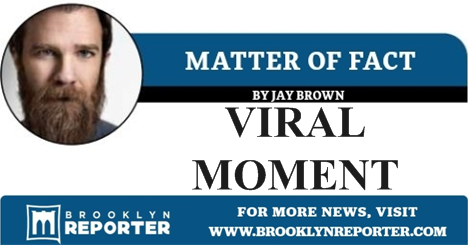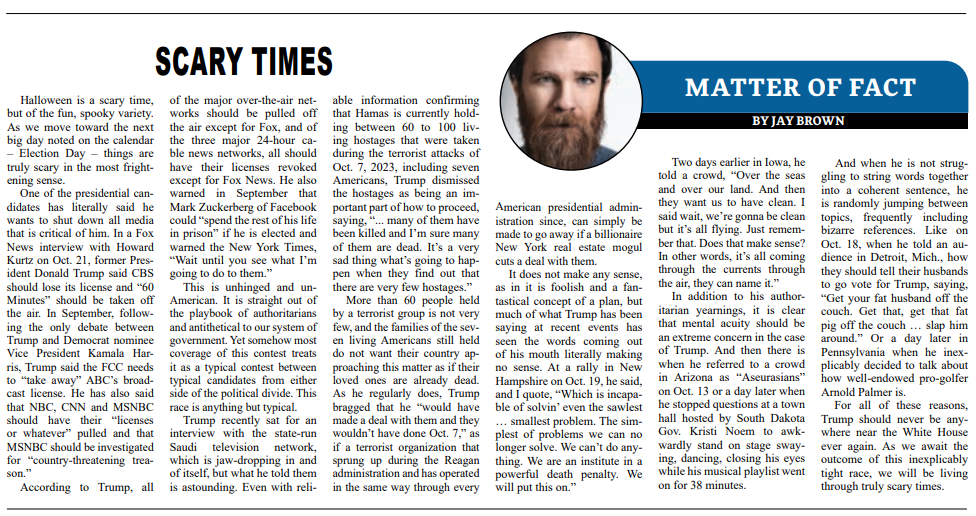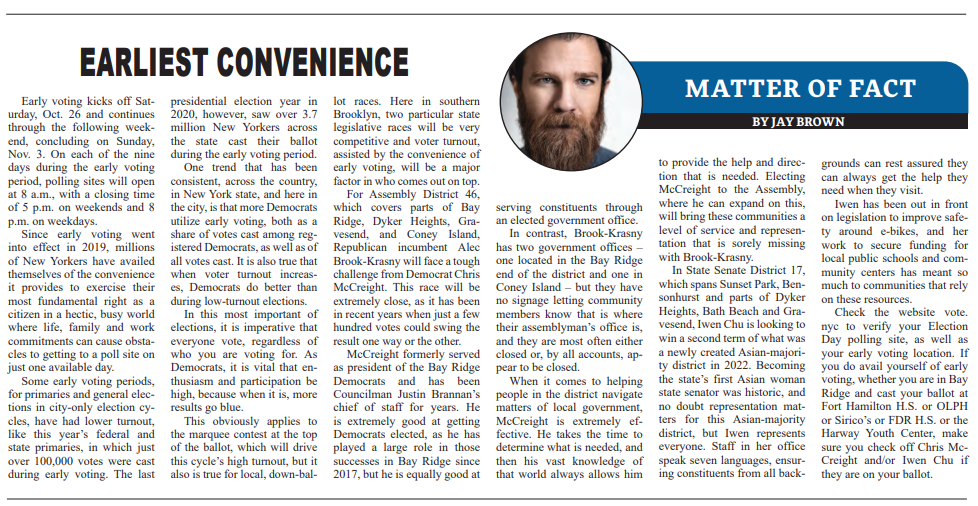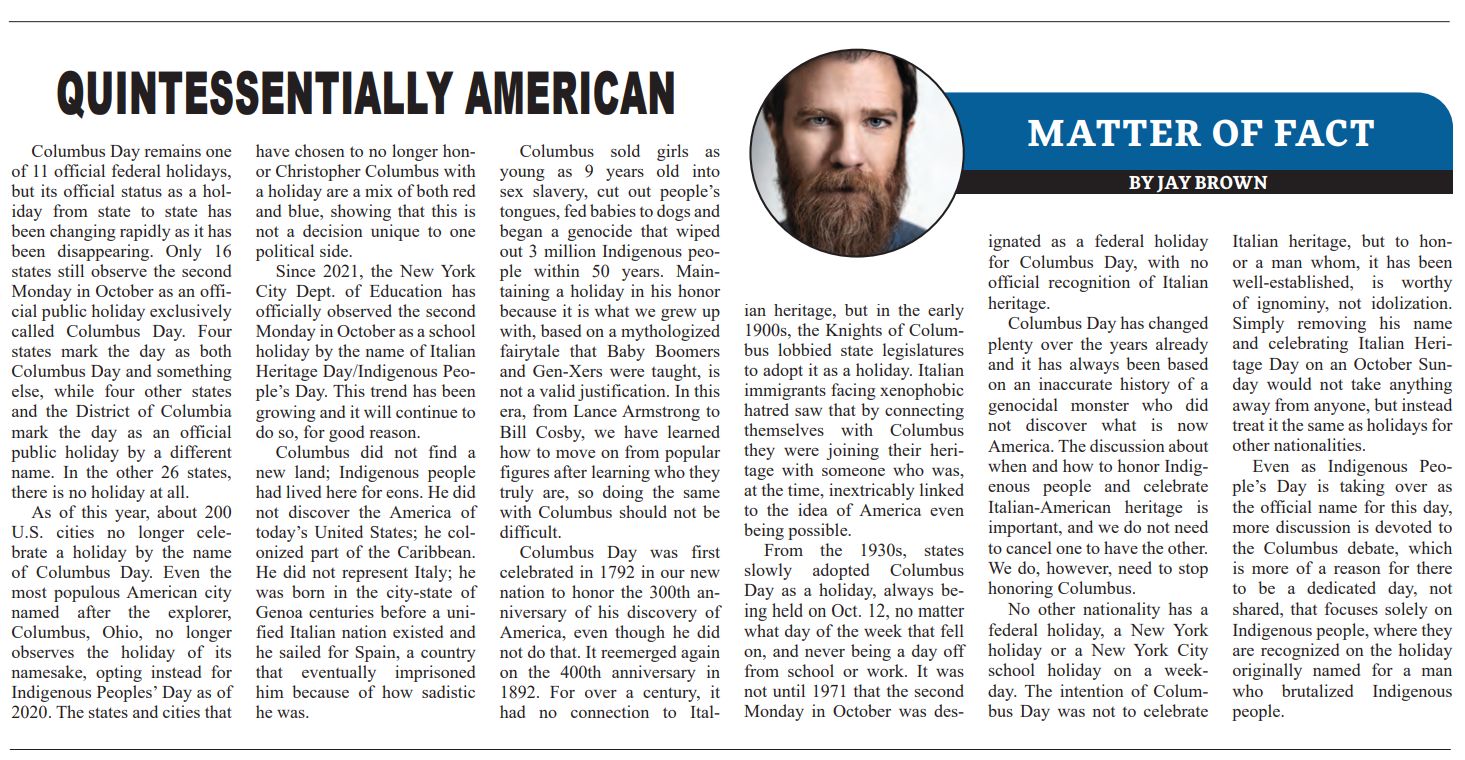This column, from the weekly opinion piece MATTER OF FACT, first appeared on BrooklynReporter.com, the Home Reporter and Spectator dated March 5, 2020
On Feb. 29, President Trump held a press conference to provide updates on the response to the coronavirus COVID-19. On that day, when the number of confirmed cases in the U.S. was 70, Trump said, “One day it’s like a miracle, it will disappear.” Just three days later, the total confirmed cases exceeded 100, with six fatalities.
On the day of the president’s press conference, New York City confirmed its first case of the virus in a woman who had recently returned home from Iran with her husband who is a healthcare worker. Both she and her husband remained quarantined in their Manhattan home while they dealt with the illness.
Three days later, on Mar. 2, it was reported that a Brooklyn man who had recently returned from Japan suspected he might have COVID-19. He went to the emergency room at NYU Langone Hospital – Brooklyn in Sunset Park, but the CDC denied the hospital’s request to test for the novel coronavirus and informed the hospital that the man could resume his everyday routine, including riding the subway to his midtown Manhattan office.

The man’s doctor disagreed and suggested he self-quarantine at home, which he is currently doing, while still in the dark as to whether or not he has contracted COVID-19.
On Mar. 3, a Westchester man who works in Manhattan was hospitalized in serious condition, with the first New York City case of community spread coronavirus, having no known connection to anyone who had been diagnosed with the virus.
All of the experts have said that the number of cases will increase. There will be no miracle where COVID-19 suddenly disappears one day. The best way to stem the tide of infections and reduce the number of those affected is to rely on sound science and facts, and have proven protocols in place, executed by capable leaders.
Unfortunately, the initial response, which should actually have begun many weeks ago, has been troubling. The countries that encountered this pandemic before us have proven that widespread testing is the most effective way to determine the extent of the problem accurately and early, which is the best way to slow its spread.
“…if the response has not been up to par, which it hasn’t, criticisms will follow. People’s lives are at stake. We need to address this head-on before it spirals out of control, but the steps taken thus far have been inadequate…”
On the CDC’s website, where it provides daily figures related to the situation here in the U.S., it suddenly stopped providing data pertaining to the number of Americans tested for COVID-19 on Mar. 2. At that time, South Korea, which has a population a third the size of ours, had tested 2,138 people per million. The U.S. had tested one person per million.
Everyone wants the federal government’s response to be successful. Nobody is rooting for it to fail. Mike Pence, who is heading up the president’s response team, was recently asked about Donald Trump Jr.’s assertion that Democrats “hope that it comes here, and kills millions of people so that they could end Donald Trump’s streak of winning.” Pence declined to disagree with Trump Jr.’s characterization and described it as “understandable.”
This is another one of these issues that we all agree on, or at least we should. People on the other side of the political divide are not wishing sickness and death upon fellow Americans and possibly themselves to make the president look bad. Insinuating that is ludicrous.

However, if the response has not been up to par, which it hasn’t, criticisms will follow. People’s lives are at stake. We need to address this head-on before it spirals out of control, but the steps taken thus far have been inadequate, and Mike Pence’s record of handling public health concerns does not inspire confidence.
He has previously written articles questioning the validity of the idea that smoking causes cancer. His extreme budget cuts as Indiana governor led to an outbreak of HIV and when a needle exchange program was suggested to slow the rate of the new infections — a solution he eventually implemented months after the outbreak began — he said, he would “pray on it.”
Whether at a hospital in Brooklyn or at the Centers for Disease Control, it is time we demand that a coordinated response be implemented across the country to limit the deadly potential of COVID-19.




